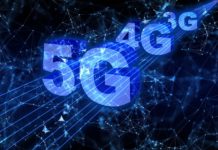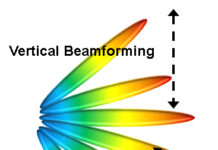As mentioned before, the name cellular phone derives from the operation of dividing the entire country in cells. This process is mandatory in order to allow different users to share the same transmission canal.
5G network will use, in a first moment, the old 4G infrastructure and then its own independent network, which wil be ready around 2025-2026.
The most evident fact of this technology regards the increasing reduction of cells size and at the same time the increase of the widespread antennas. For this reason the population saw this evolution with high sense of concern, sometimes in a negative way, taking opposing position ex antes (as shown at Scanzano Jonico). However, the new antennas, as we will see, require less power, compared to the nowadays network, and guarantee a more efficient performance due to the technology adopted. This power could be considered similar to that spread by the domestic WIFI system, to which no hostile attitude is justified. The main feature, in addition to efficiency, is related to the possibility to activate, when a user is connecting, the antenna on demand, remaining turned off when not in use.
In order to guarantee broadband connection, transmission speed of GB/s, multiplication of connection, low ping, more efficient cells we’ll be employed: microcell, picocell and femtocell, from the greatest to the smallest respectively.
Microcells
They’ll be able to serve a wide enough area, like a smart city, industrial facility ecc. They will be able to cover an area from about 550 m2 until up to 2.5 Km2. Due to a power of 2 or 5 Watt they are going to connect 200 users at the same time through cables, optic fibres and microwaves. Due to their characteristics they’ll have a medium cost.
Picocells
With coverage of 100-250 m2 of internal area they’ll need a transmission power of 250 mWatt, 10 times less than a microcell. This low cost device will use cables and fibers. The maximum simultaneous users will be from 32-64, making this technology adequate for hospitals, malls, offices and schools.
Femtocells
They are for sure the smallest device defined, they will be suitable for domestic use, so for residential areas and small factories (coverage from 10 m2 to 50 m2). The estimated power will be about 100 mWatt connecting via cable from 8 to 16 users simultaneously, with a very low cost.
The differential coverage dimension, power and cost were considered to guarantee an optimized capillary network for a more efficient technology. The cited on demand transmission, the beamforming and massive MIMO contribute to resource optimization achievement of resource. All this technology had required and will require more and more effort for developing and production; small cell builder increased their number with the reduction of cost. Different start up proposed several solutions to guarantee connections everywhere, also with the help of microcells low orbit inside satellites or probe balloons. These technology will provide the maintenance of connection even after cataclysm (earthquake or tsunami). We are witnessing of a new revolution whose origin takes places from emerging necessities and technology able to support them.






